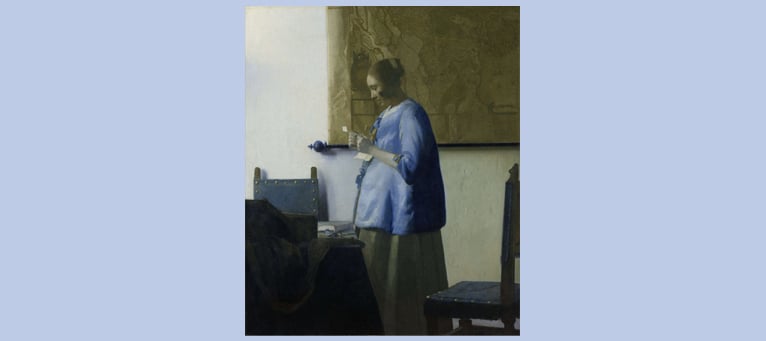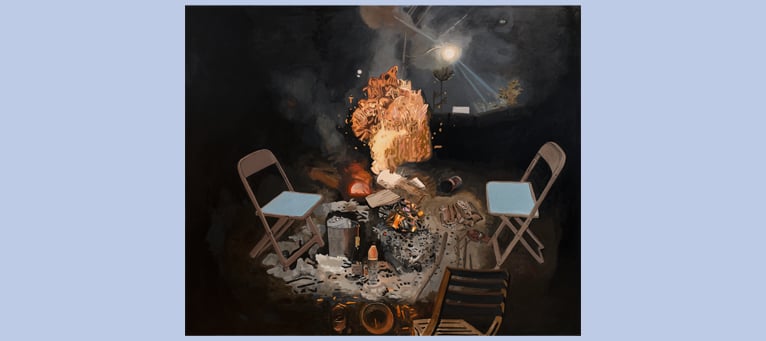Sheila Heti redefines what a novel can be
The author set out to write a book ‘that no one can say what it’s about.’ And possibly created a whole new genre.

(Photograph by Carmen Cheung)
Share
It’s one of the last warm nights in October. I meet Sheila Heti at Bar Mordecai in Toronto for a drink before our recorded interview over dinner. She orders a gin and tonic and I have a dirty martini. It’s early, and the bar is empty apart from us, though the music is a touch too loud. Heti wants to know what’s been going on. I tell her that I’m still recovering from my U.S. book tour, which had me hiding in my New York hotel room and practising breathing exercises. After I flew home, I sent Heti an email saying, “The past few weeks have definitely been a challenge . . . quite an adjustment. I don’t know how you did it the first time around. I had the worst dread every day new press came out.”
I had wanted Heti’s advice on how to approach being thrust into the public sphere, which felt like being captain of a ship that steered itself with no input from me. The culture around books tends to conflate a novel with the author’s biography, persona and morals, which can be dizzying, especially when you suddenly find yourself the subject. Though I understand this is a covetable position, the attention feels adverse to the actual writing—the production of art. Heti is no stranger to this phenomenon in the press, and has playfully courted its mechanics for two decades. Already established in Canada, she gained international prominence after publishing How Should a Person Be? in the U.S. in 2012, and has been touted as a leading writer of “autofiction,” which is often defined as fictionalized autobiography. In How Should a Person Be? the characters keep the names of their real-life counterparts while the novel makes use of conversations drawn from audio recordings of Heti and artist Margaux Williamson.
As we sip our drinks, Heti and I laugh about having to distinguish ourselves from our characters. Even though we share similar biographies with our respective protagonists, they are still fictional creations. Before we head off to dinner, Heti insists on paying the tab. I insist back, saying I have allocated funds for this night in particular, and I want to take her out. She refuses and says that it’s just what older writers should do.
MORE: Tanya Talaga is telling the stories Canada needs to hear
Our correspondence began thanks to publisher Martha Sharpe, who released my novel, Happy Hour, at her independent press, Flying Books, in 2020. Sharpe acquired Heti’s first two books, The Middle Stories (2001) and Ticknor (2005), during her time as publisher at House of Anansi. Later, while at Simon & Schuster, Sharpe acquired Motherhood, which was published in 2018. Over the years, the two have stayed close, with Heti sending early drafts of whatever she’s working on to Sharpe. It was Heti’s ability to be both “wise and wide-eyed” that caught Sharpe’s attention early on. “Her writing is so alert,” Sharpe tells me.
Four years on from Motherhood, Heti returns with Pure Colour. “For me, the frustration with publishing Motherhood was that everyone was like, ‘Oh, it’s a book about whether or not she wants a baby,’ ” says Heti. “It’s much more than that.” She didn’t want a subject that people could easily reduce by hanging a neat tagline on it. “I was like, ‘I’m going to write a book that no one can say what it’s about.’ ” Heti laughs mischievously.
When I first heard whispers about the novel, I was of the mind that this would be a new turn for Heti, a new era, something that flirted with genre or at least the surreal. A father and daughter become a leaf—how else could you describe it? Upon reading the book, I was struck by the gentle, tender philosophies it holds. It is a novel, yes, but it is also poetry, and a treatise on grief, art, criticism and love. It moves Heti away from any preconceived notions of what a new novel from her might look like. “Somebody spoke about writing as a spiritual autobiography. [They said] a whole career is like a spiritual biography, and it’s true,” she reflects. The term was used to describe a genre popular in 17th-century memoirs, which followed the author’s spiritual journey and how they came to espouse new ideas over time. Heti’s journey now comprises several works. Pure Colour is her fourth novel and 10th book (her second children’s book, A Garden of Creatures, is coming in May).
I ask if there’s a sense of freedom that comes with a sustained amount of success. “I can’t go back into the world and be like, ‘You should buy this book,’ ” she says. “This is just where I was.” Heti describes having been in the mindset that led to Pure Colour for the last three years. She takes a moment before saying, “With every book, I’m like, ‘I believe in it.’ I think it’s the best thing I could do, and I think it has artistic merit, but I don’t know how the world is going to receive it. I care, unfortunately. But I care less with this book, because it was something from deep within.”

(Photograph by Carmen Cheung)
We are now settled into the back patio of Bernhardt’s. Away from the street, the only noise is the pleasant chatter of people dining. There is a quiet atmosphere that feels provincial, like we are in a small town. We continue with another round of the same drinks we had earlier in the evening—Heti decided before meeting me that she would only have gin and tonics tonight. We order half a roast chicken, burrata and some greens to share. Heti goes back and forth about ordering the carrots, to which I say, “Why not?” There’s a sense of occasion to being able to freely discuss the intricacies of our craft.
Writing novels is an artistic practice, but in this particular moment, there is a tendency to mistake the novelist for the media. “We’re thought of as journalists,” says Heti. “Writers are not given the same freedom as visual artists, and I don’t know why. Maybe it’s because people want language to tell them something concrete; they want writers to have a moral or political clarity.” The public becomes fixated on what is true to the writer’s beliefs and whether they can judge them for it.
RELATED: I embrace the term ‘Black writer’ but racism is rarely at the heart of my work
Most good writing survives in murkier waters that require a keen eye for subtlety; the reader feels drawn to the work enough to come back to it and find something they previously overlooked, and it isn’t necessarily something concrete. To understand truth in storytelling is to take the art as a question, rather than as an answer. Sharpe tells me that the through line in Heti’s novels is her curiosity. She later adds, via text, “Sheila’s an insatiable questioner.”
Experiencing the loss of a parent is something Heti and I share, and we have both tried to grapple with grief in our fiction. “You just feel like the world is suddenly a different place,” says Heti. “If you love your parents, you dread them dying, and I’d anticipated it so much.” In the middle of the novel, protagonist Mira loses her father. She poses the question, “Who would save the dead from oblivion, if not we, the living?” His spirit attaches to her and together they enter a leaf, where he rests. Mira stays suspended in the leaf in order to postpone the realities of life without him. Heti describes this experience of grief as the only thing that made sense. “I just couldn’t write in the same way,” she says. “But I feel like what I wrote is realism because that’s really what it felt like, and what it was like. It is another dimension, and you do go into a leaf with a person who died, and you are somewhere else.” For the artist, the only way to save the dead from oblivion is to bring them back into your work.
“When I was writing How Should a Person Be? I had this sentence in my head—‘God is three art critics in the sky’—and I wrote it down,” Heti says. This idea evolves in Pure Colour, where there are three types of people: the birds, who are the artists; the bears, who lovingly nurture a select few; and the fish, who are concerned for the well-being of many. To describe it outside the context of the novel is to ask someone to take a leap of imagination, but the structure of this world is not so different from that of star signs or even professions. Mira is a bird, her father is a bear and Mira’s love interest, Annie, is a fish. The world they are living in is God’s “first draft,” an impermanent stage set up to make room for a second draft that God will revise, using the mistakes from the first. It is the combined realities of a mythical structure and Mira’s more recognizable life (school, jobs) that reminds me of another work that defies description, Anne Carson’s Autobiography of Red. It is difficult to describe Pure Colour without feeling like you do a disservice to the text. If Autobiography of Red’s subtitle is “A Novel in Verse,” perhaps a subtitle of some kind would similarly help orient readers’ approaches to Pure Colour.
As the main course arrives, our conversation moves to Impressionism. Heti admits to being fond of Édouard Manet’s work since studying art history in university, and Pure Colour pays close attention to his painting A Sprig of Asparagus. In the novel, the painting is described as “the perfect balance between carefulness and carelessness, and the delicate and unassuming heart he put into every line.” By chance, I have been writing an essay on 17th-century Spanish painter Diego Velázquez, whom many Impressionists considered their forebear, with Manet calling him “a painter of painters.” What Impressionists took from Velázquez was the idea of the work disappearing the closer you get to the brushstrokes. To take in an Impressionist painting at its most impactful, you must step back and view the work as a whole. The paintings create a feeling much like the hazy edges of memory. It’s not exact, but it is evocative.
Heti on three paintings:
(Click through this gallery. Story continues below.)
One of Heti’s favourite books is Manet and His Critics. She describes it as a book about all the critics who wrote negatively about the artist in his lifetime. “People don’t find anything beautiful unless it’s familiar, for the most part. Beauty is what we’ve learned is beautiful, so his stuff was so strange to them, and it couldn’t be beautiful because it was just too new,” Heti says. “I liked that he was hurt by it. He wasn’t so immune to being human.” Her interest in criticism was piqued when she knew she understood the significance of art, but was curious about the value of criticism. “Was it as important as the art itself, or not?” she says. Heti describes trying to answer this question in Pure Colour. “The best explanation I could think of is we’re living in the first draft of the world and we have to be critics,” she says.
She tells me that unlike other writers, she reads all her reviews (I tend to skim those that are filtered to me). In a 2018 episode of the Longform podcast, Heti says, “There’s something about being reviewed where you feel really . . . you just feel really alone in it. You feel like they’re talking about my book, and I’m the only one who’s having an emotional reaction to the review. Everyone else just reads it and it’s a review, but for the writer it can hurt.” Like Manet, she is not immune, but this does not dissuade Heti from trying to grapple with criticism’s significance on a larger scale. “Criticism is necessary for progress, and criticism is necessary for a better future,” she says.
In the same Longform episode, Heti explains her process of writing a book. “I have to see the beginning, the middle, the end and all the scenes, [like] looking at a painting. You sort of want to glance at it and see everything . . . and that’s really hard to do with a novel.” Only after hearing Heti’s words from four years ago do I understand that Pure Colour is a “Novel as Painting.” At dinner that night, as I explained Velázquez’s spare use of pigment, I could see a correspondence forming between Pure Colour and the Impressionists. Pure Colour resists cerebral analysis because the basis of it is in the feelings it evokes. In its totality, grief is often indescribable and unique to the individual’s experience; to create a novel of otherworldly scenes and images makes it feel closer to its emotional reality.
Later, via text, Heti agrees with my assessment. “I’ve never had so many people reading a book of mine say that they want to reread it. I think it’s because they want to hold the whole thing in their head, like a painting.” You forget a work of art’s magnitude; you need to be in its presence or else your memory doesn’t give justice to its impact. As I revisit the novel over the course of writing this profile, my own grief surfaces each time I encounter the text. It compels me to be soft and open, after moving through the world with hardened skin. Toward the end of the novel, there’s a tender missive: “Sometimes it is the orphans, the fish—who were sent off to swim alone in the world’s waters—who see the whole picture most clearly. They have no parents blocking their sight, and swimming as they do, under the water, if they are not afraid to open their eyes, everything becomes incredibly clear.”
This article appears in print in the February 2022 issue of Maclean’s magazine with the headline, “How should an Artist be?” Subscribe to the monthly print magazine here.


